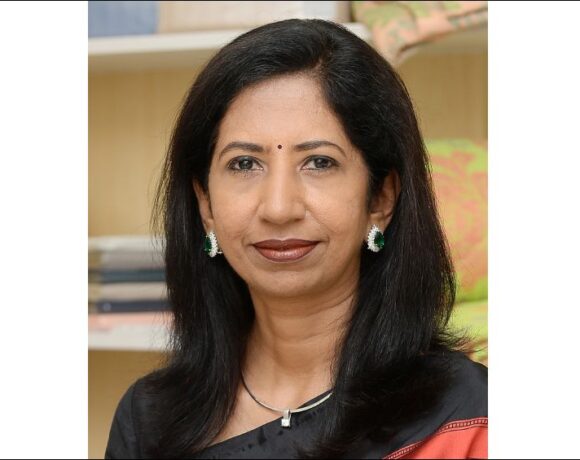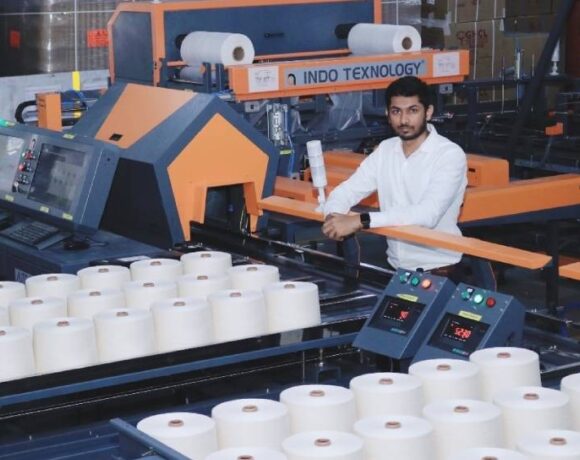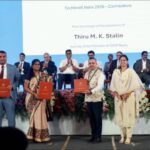‘We Must Use Much Fewer Virgin Resources And Use All Green Energy’

To grow as an industry, we need to think about the development of the entire chain – from our raw material sources to finished products, says Anuj Bhagwati
Can you share the key milestones and achievements of A.T.E. over the last decade?
We have had some key accomplishments in both our established businesses as well as in our new businesses. In the textile engineering field, in which we have been for 80 years, we have grown market share across the board. We have introduced many new products to the market such as TeraSpin’s energy-efficient spindles and drafting systems; Trützschler’s new cards, draw frames and combers for spinning; KARL MAYER’s next-generation warping and sizing machines for weavers, as well as their new warp-knitting and technical textile machine; new, energy and water-efficient wet and dry processing machines from Fong’s and Monforts, and automation from our Texpa, ColorService and our in-house experts. We are pleased that textile mills have rewarded us and our business partners with repeat orders.
Our new ventures, which are mainly focused on the environment, have introduced novel products and processes and have established performance with very discriminating customers globally. For example, our cooling business HMX serves customers such as Volkswagen, ABB, Bosch, GE, MRF, Coca-Cola, etc. We have installed cooling machines all over the world, and are growing very fast in the Middle East. Our waste-water treatment business A.T.E. HUBER Envirotech has built ETPs as far west as the Americas and as far east as the Philippines for brands such as Indorama, D’Décor, Ramco, MAS Fabrics, Delta Galil, etc. AxisValence serves half of the top 10 global converters in the print and packaging segment with its camera-based inspection systems and other products. Our IoT business EcoAxis is unique in that it is focused on sustainable manufacturing and again has global leaders in its customers list.
What are the current trends and challenges in the industry, and how does A.T.E. plan to address them?
We believe the major challenges the textile industry faces are around transitioning towards sustainability and finding skilled manpower. We must use much fewer virgin resources – both material and fresh water – and use all green energy.
All our principals are focused on “green”, with energy efficiency, water saving, waste reduction, recycling, and automation being key themes for all of them across sectors.
Our investments in the last few years around building up our capabilities in our group’s environment-related businesses put us in a unique position to contribute to our customers solving these challenges. We have experience in A.T.E. HUBER with high-performance, low life cycle cost wastewater systems, including zero liquid discharge. We have complete solutions for sludge reduction and management. Our EcoAxis product axisCONSERVE is very useful to map, analyze, and reduce one’s energy and water footprint. Our HMX cooling solutions help provide comfortable working conditions that improve productivity with high energy efficiency.
Our customers also face problems in finding skilled workers. So, they are keen to find solutions that reduce manual intervention and help maintain quality even when teams running production don’t have a lot of experience. Again, this is an area we and our principals have worked on so that we have ideas and experience that can be of immediate help. In addition to production equipment, we can also offer solutions for logistics such as Craftsman’s storage and warehousing systems and many others. So, we are working hard to help our customers navigate their current challenges.
How has the partnership with various textile machinery manufacturers contributed to A.T.E. Group’s overall business performance in terms of revenue growth and market share?
Our partnerships are integral to our growth. Probably half of our growth is through our partnerships and half through our own manufacturing.
What are the company’s strategic priorities for the next few years? Going forward, do you have any plans for investment in capacity building?
Our strategic priorities are to grow our current businesses. We now have a strong foundation in all business areas we are active in, and we want to build on that. We see good growth prospects in India and outside India. For example, if we look at the footprint of our sales in the last year, you will find customers in Brazil and the Dominican Republic in the West, the Philippines and Vietnam in the East, and India, Saudi Arabia, UAE and so many other nations in between.
In the last year, we have completed projects to double our wastewater treatment manufacturing capacity and to double our cooling machinery manufacturing. We are already readying our plans for the next expansions.
Human capacity building has been a key value at A.T.E. for decades. So, we are strengthening our human resources team and expanding our learning and development plans as well, as internship and trainee programmes.
What is the A.T.E.’s approach to sustainability and corporate social responsibility?
Today, our entire business is built around our motto “Partnering People and the Planet”. That drives our strategy and our investments. We are already water-neutral and plan to stay that way. We would like to be zero carbon as well in the next 2-3 years.
A.T.E. has been a social company for 85 years. From the beginning, we have worked for human development through our business. We’ve done this through donations from the group, a chunk of personal time, and for the last several years, through a foundation, we are pleased to be a part of, the A.T.E. Chandra Foundation that we have formed to help the noted philanthropists Archana and Amit Chandra.
What is your message to the industry?
I believe that to grow as an industry, we need to think about the development of the entire chain – from our raw material sources to finished products. We need to care equally for the rest of the ecosystem we are part of. I feel the industry associations, raw material and textile giants and the government all need to have this mindset.
I also think that we have many strengths that we need to highlight more. For example, so much of the spinning industry runs on green power, but we don’t see ourselves and market ourselves as green producers. India’s water discharge norms are probably the most stringent in the world, but I don’t think we explain this enough.
Finally, I think all of us need to invest much more in product development and market development.














